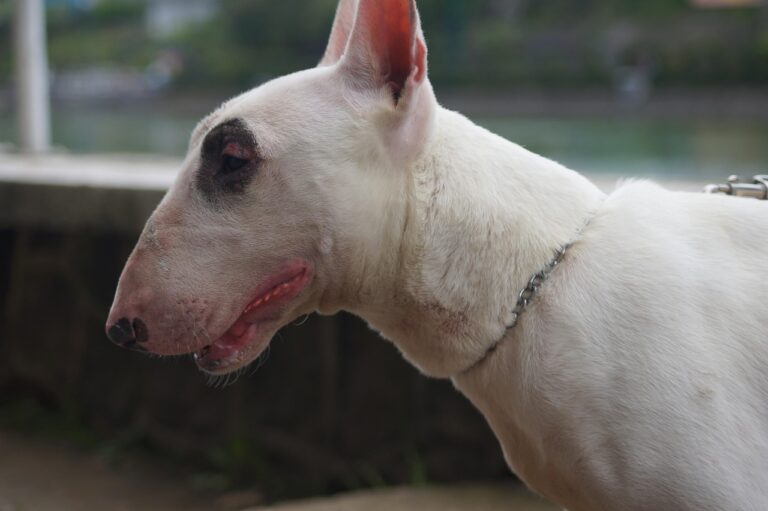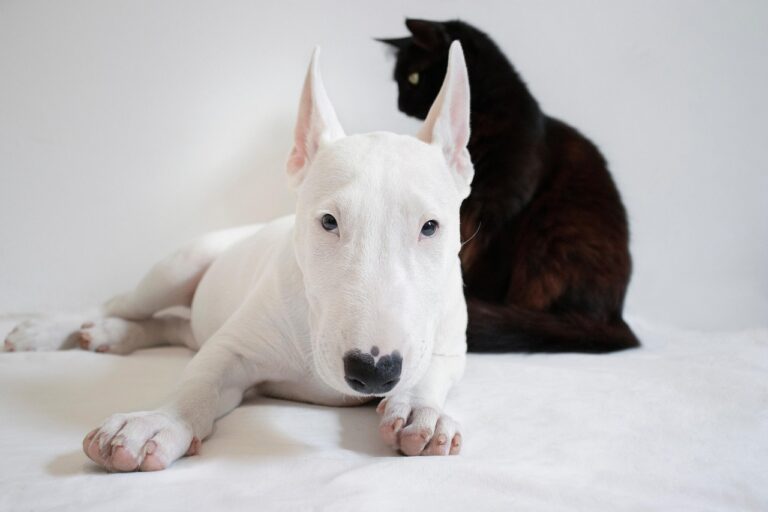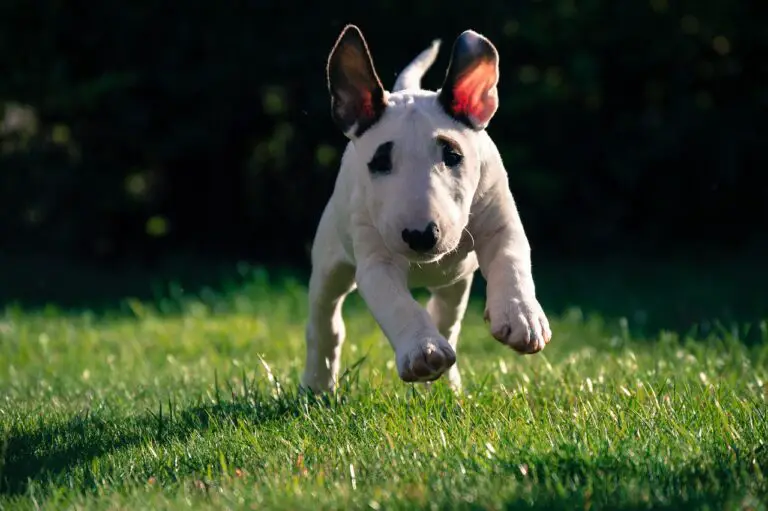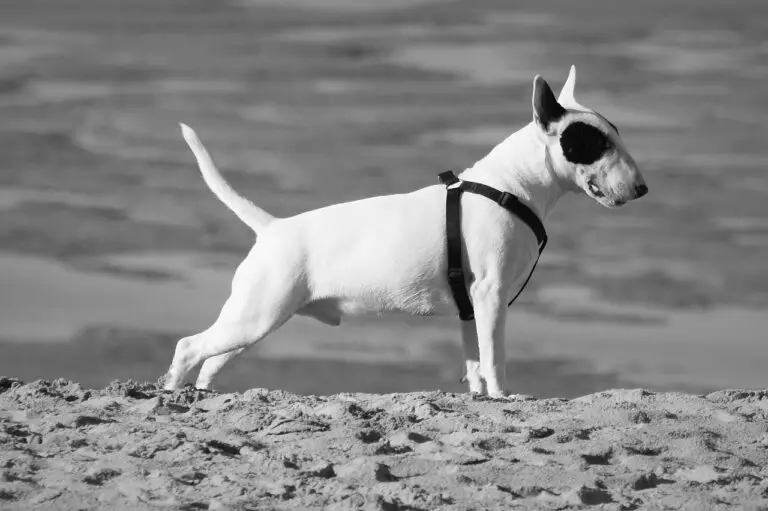Bull Terrier bite force – How strong is a Bull Terrier bite?
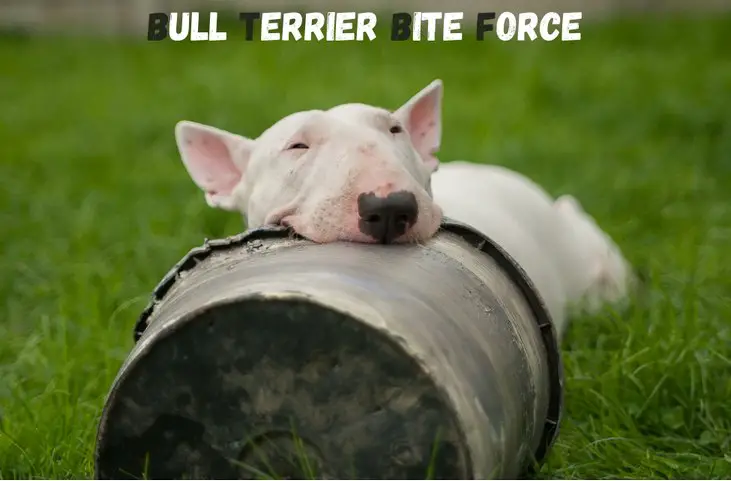
In recent years, increasingly more dog owners are interested in knowing the bite force of their beloved four-legged friends, especially with the tests that have been introduced to the animal kingdom by scientists and documentary filmmakers.
Multiple tests have been conducted on multiple animals that carried for years the label of worst bites, but surprisingly the results have shown that size and aggression are not synonymous with a stronger bite force.
Dog owners looking to know the bite force of their dogs is simply out of curiosity and a nice topic to impress friends in the bar or at a family reunion,
However, if you have some concerns about your Bull Terrier biting you or other persons we’ll be providing some insights about this wonderful breed and if its strong bite is dangerous.
The Bull Terrier bite force was never tested accurately, it was estimated to be around 250 PSI based on the shape of his jaw and his strongly built muscular body, making him on the list of the strongest 15 dog bites.
However, it is worth mentioning that these tests are not 100% accurate, since it’s simply impossible to instruct an animal to bite with all its force for the sake of testing, but it consists in stimulating and simulating a situation in which the animal will bite.
No animal has ever registered the same results for two bites, which shows that these measurements are never accurate but will give a roughly close idea about the bite force of the species.
The bite force variation is tied to differing jaw shapes and tooth forms, that’s why the Bull Terrier makes a good candidate with his muscular large jaws.
How is the Bull Terrier bite force is tested?
Testing the bite force of a Bull Terrier or any animal for that matter is not as simple as simply asking the dog to bite as hard as he can.
Most animals, dogs included adjust their bite force to every situation, that’s why it is hard to get a clear reading of their true bite force.
The closest scientists have gotten is simulating a situation in which the animal needs to bite hard, and measuring that bite force in that particular situation.
“The testing is like dragon slaying by committee, often involving ten or more people to test a single animal,” said Erickson, of Florida State University when testing the bite force of the saltwater Crocodile.
The difficulty of the bite force testing is why these tests are not conducted on most dog breeds, but research was done by computers analyzing jaw from and muscles have abled scientists to give an estimate of the bite force for multiple species.
Bull Terrier bite force and its measurement
The bite force is generated by the interaction of the masticatory muscles, the mandibles and maxillae, the temporomandibular joints, and the teeth.
The bite force is measured using Pound Force per Square Inch also referred to as PSI, transducers, or load cells, are used to convert the force of the bite to electrical energy that can be measured.
There are actually two ways to measure the bite force pressure of the Bull Terrier and any other animals but it remains at best an estimate.
In vivo bite force test
These are tests performed on living animals, often times the animal is conscious and in a situation where he’s lured to bite a target that has a testing device on it.
There are other tests that are performed on sedated animals by electrical stimulation of jaw adductor muscles, but this may not be reflective of volitional bite force during natural activity.
In vitro bite force test
In vitro bite forces have been estimated by calculation of the force produced using mechanical equations representing the jaw adductor muscles and of the mandible and skull structure Bite force can be estimated in silico using finite element analysis of the computed model of the anatomical structures.
Do Bull Terriers lock their jaws when they bite?
Bull Terriers and all dogs have no kind of locking mechanism that will prevent it from opening, they simply have a strong bite.
The real danger of a dog bite is not when he bites down on something and refuses to let go, but instead when he shakes his head and that’s when you can expect more damage, but this is very unlikely with Bull Terriers, they are not likely to bite humans.
This misconception of dogs locking their bite is caused by the fact that they can bite onto something and hold it for a long time and you’ve probably observed this behavior playing with your dog.
However, this only shows how strong their bite actually is and has nothing to do with their jaws doing something abnormal.
Does the Bull Terrier bite force make them dangerous?
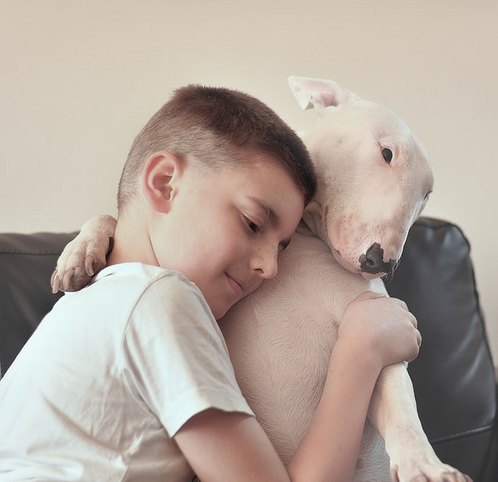
Bull Terriers have an intimidating muscular look with large jaws, the almond eyes take away from them the big-eyed happy dog look, add to that their strong bite force and it’s understandable to be worried.
What’s more intimidating is that the Bull Terriers were initially bred to be ferocious gladiators in blood sports, but looks and reputation can be deceiving.
The Bull Terrier is a great family dog, he is very affectionate with the family, great with children, and needs a lot of quality time with his adored humans, although the breed needs early socializing with other dogs.
Teaching a Bull Terrier bite inhibition
Bull Terriers have indeed a strong bite force, one of the strongest among dogs, but they are fun and loving dogs that are very unlikely to bite humans.
However, even a small puppy can have a seriously strong bite, that’s why you need to make sure they learn bite inhibition to avoid any unfortunate accidents.
So what is bite inhibition?
It is when a dog or a puppy learns to control the strength of its bite, puppies are mouthy and will use their mouth to communicate, so you need to make sure they use it properly.
In general, puppies learn bite inhibition from their littermates and mom, siblings will yelp and bite back if the youngster chomps down too hard, and Mom-dog stops the games if he’s too rough, so Junior learns limits.
Orphan puppies or those taken away too early must be taught soft mouth, imitating other littermate reactions can help along with time out (right away) and facial expressions are all means to teach your puppy bite inhibition.
It generally takes a few sessions for the puppy to learn that he is in control of the situation and once he starts exhibiting soft mouth bites you need to praise and reward.
Reference
https://www.frontiersin.org/articles/10.3389/fvets.2018.00076/full

